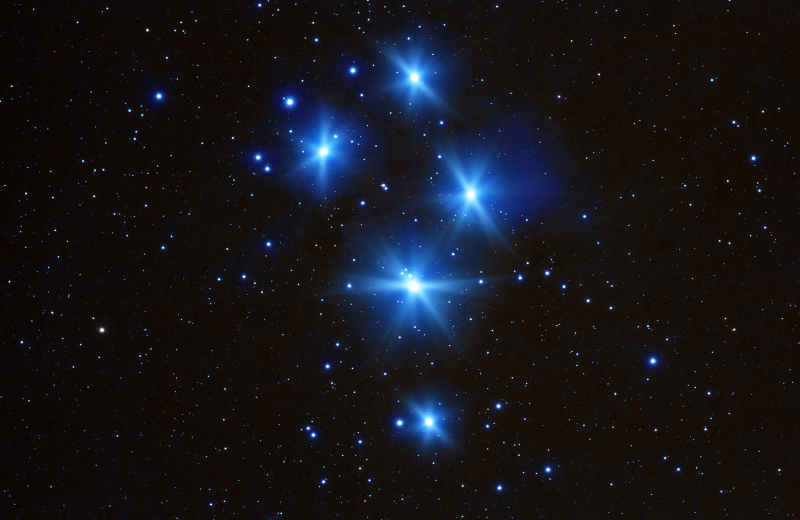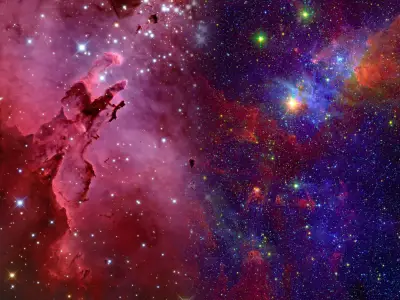Among the lesser-known constellations, Telescopium offers a fascinating glimpse into both the wonders of astronomy and the creativity of human imagination. Whether you’re a stargazing enthusiast or simply curious about the universe, the Telescopium constellation has something special to offer.
Jump to:
Recommended for you!
Best SellersWhat is the Telescopium Constellation?
The Telescopium constellation is a small yet intriguing group of stars located in the southern hemisphere. Its name comes from the Latin word for "telescope," reflecting its origin as a tribute to one of the most important tools in astronomy. Telescopium was introduced in the 18th century by the French astronomer Nicolas-Louis de Lacaille, who aimed to celebrate scientific advancements.
The constellation sits near Sagittarius and Corona Australis, nestled in a quieter part of the sky. Although it may not boast the brightness of more famous constellations, Telescopium holds a unique place in the celestial sphere, symbolising humanity’s quest to understand the universe.
What Does Telescopium Look Like?

Telescopium is a modest constellation covering a relatively small area of the night sky. Its stars form an elongated shape that vaguely resembles a telescope. While its brightest stars are not as prominent as those in more famous constellations, they are still visible under clear, dark skies.
How Far is the Telescopium Constellation from Earth?
The stars in Telescopium vary widely in distance from Earth. The closest star in the constellation is around 130 light-years away, while some are significantly farther. The varying distances highlight the vastness of space and the complexity of pinpointing specific celestial objects.
The Telescopium Constellation Myth

Unlike constellations from ancient Greek or Roman mythology, Telescopium does not have a mythical backstory. It was created in 1751–1752 by Lacaille, who named it during his charting of the southern skies at the Cape of Good Hope. His aim was to celebrate the Age of Enlightenment and the tools that revolutionised human understanding of the cosmos.
While it lacks the dramatic tales of gods and monsters, Telescopium’s significance lies in its connection to scientific discovery. It serves as a modern-day reminder of how far humanity has come in its exploration of the universe.
Telescopium's Stars
Telescopium, though a subtle constellation, features several intriguing stars with unique characteristics:
- Alpha Telescopii: The brightest star in Telescopium, Alpha Telescopii is a striking blue-white star situated approximately 250 light-years from Earth. Its vivid hue and luminosity make it a standout feature, even in a relatively subdued constellation.
- Zeta Telescopii: This fascinating yellow giant shines with a warm golden hue, adding depth to Telescopium’s stellar ensemble. Located farther away than Alpha Telescopii, its distinctive colour makes it an excellent target for telescope observations.
Nebulae in the Telescopium Constellation

Although Telescopium itself does not contain famous nebulae, its location near the dense star fields of Sagittarius places it in a rich region of the sky. This area is home to several deep-sky objects, including clusters and nebulae, which are stunning to observe through a telescope.
For instance, Telescopium’s proximity to the Milky Way makes it an excellent vantage point for exploring the galactic core, offering breathtaking views for those with advanced stargazing equipment.
Finding Telescopium in the Sky
Telescopium is best viewed from the southern hemisphere, particularly during the winter months between June and September. During this time, the constellation appears higher in the sky, making it more accessible for observation. For those in the northern hemisphere, Telescopium is only visible from tropical latitudes, where it remains relatively low on the horizon.
Locating Telescopium
To locate Telescopium, start by identifying its neighbouring constellations, Sagittarius and Pavo. From there, look southeast toward the quieter region of the sky where Telescopium lies. Using a detailed star chart or a stargazing app can make this process easier, especially if you’re navigating light-polluted areas.
Enhancing Your View with Equipment
- Binoculars: A good pair of binoculars can help bring out Telescopium’s subtler stars, enhancing your view of its key features.
- Telescope: To fully appreciate Telescopium, especially its dimmer stars and nearby deep-sky objects, a telescope is your best tool.
Optimal Viewing Conditions
For the best experience, seek a location away from city lights, where dark skies reveal the subtle beauty of Telescopium. Allow your eyes time to adjust to the darkness, and use a stargazing app to guide your exploration. Telescopium’s understated charm becomes more apparent with patience and the right conditions, rewarding those who take the time to find it.
Recommended for you!
Best SellersFun Facts About Telescopium
- Modern Origin: Telescopium is one of the few constellations created in modern times, reflecting humanity’s scientific progress rather than ancient myths.
- Notable Stars: Alpha Telescopii, the brightest star in the constellation, is a massive blue-white star nearing the end of its lifecycle.
- Exploration Gateway: Telescopium’s position near the Milky Way allows astronomers to explore deep-sky objects, including distant galaxies and star clusters.
Study Astronomy for £29
If the Telescopium constellation has sparked your curiosity, why not explore more about the stars and the cosmos with our Astronomy Diploma Course at Centre of Excellence? This course offers a detailed understanding of the universe, from constellations and star types to the fundamentals of space observation. Perfect for all budding astronomers, the course is available for a discounted price of £29.













